It’s official, Melbourne is one of the fastest growing cities in the world, which is placing chronic pressure on infrastructure, housing and overall liveability:
At 2.7 per cent last year, the city is growing at a rate usually associated with rapidly-expanding cities in China and South America…
…”It is without doubt in the top five fastest-growing cities in the developed world,” said Matthew Deacon, a demographic expert with population think tank .id.
“It’s historically extremely high, at least since the start of the modern data collection in Australia”…
Melbourne is now showing growth rates comparable with Bogota in Colombia, Pune in India and Nanyang in China between 2010 and 2016, according to United Nations data…
Meanwhile, Deloitte partner, Daniel Terrill, is arrogantly demanding that politicians bulldoze Melbourne’s middle suburbs to make way for a projected 3 million expansion of its population over some 30-years:
The researchers have found Melbourne’s pattern of growth over the past 20 years has resulted in one in three of the city’s 5 million residents now calling the outer suburbs home…
To get to good jobs, those in the outer suburbs predominantly drive.
…more must be done to quell fears over medium-density apartments and for local and state governments to stand up to opponents of development…
Deloitte’s Dr Terrill said more quality development and a less relentless focus on the downsides of high-density living was needed. “Density is actually good for liveability,” he said.
“Good for liveability”, Dr Terrill? Not so according to Infrastructure Australia, whose recent report unambiguously shows that Melbourne’s liveability will be wrecked as its population balloons to a projected 7.3 million people by 2046. Irrespective of how the city builds-out, traffic congestion will worsen as will access to jobs, schools, hospitals and open space:
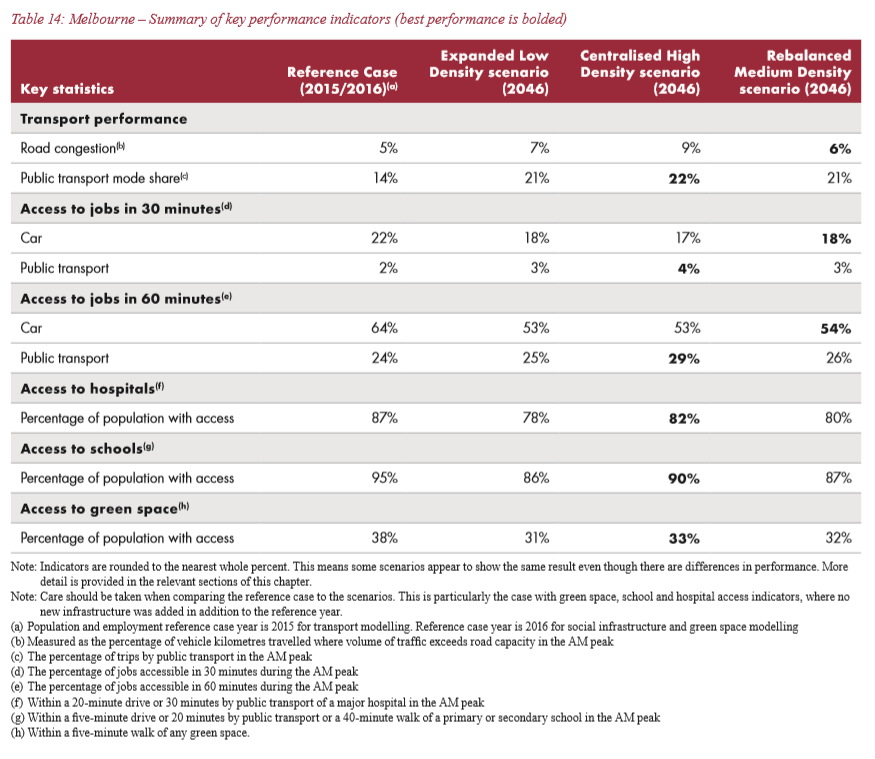
Hardly seems like a win for liveability, does it?
Cognitive dissonance is clearly running strong at Deloitte. Instead of addressing the problem at the source – by arguing to normalise immigration (see next chart) – Deloitte insists on treating the symptom by squeezing the extra people into more high density boxes.
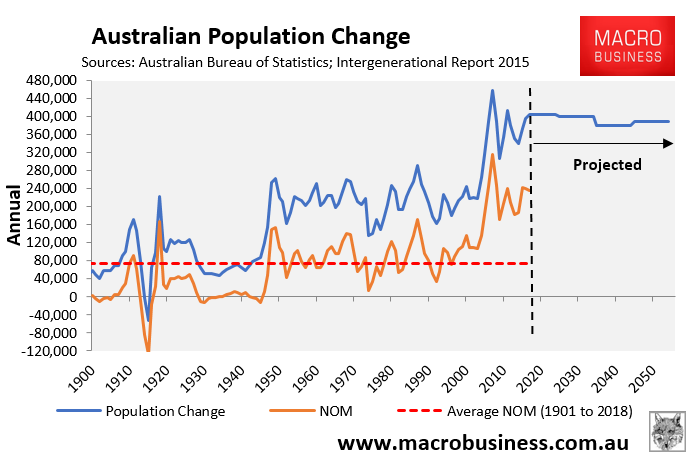
But Melbourne is building high density dwellings hand over fist (see next chart), yet this is still nowhere near enough to cater for the rampant population growth. Surely, then, it is the very definition of insanity for Deloitte to insist on doing the same thing over and over again and expecting a different result?
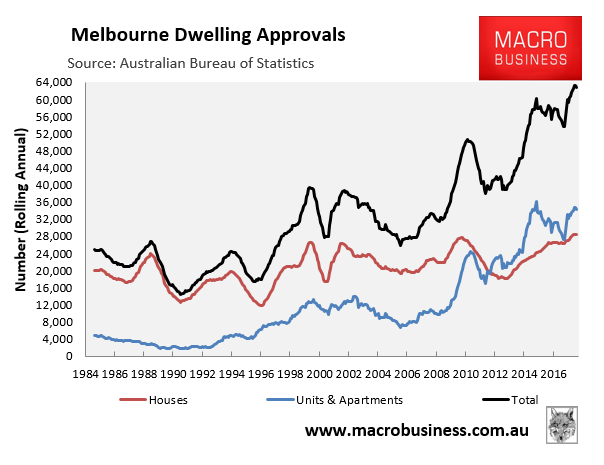
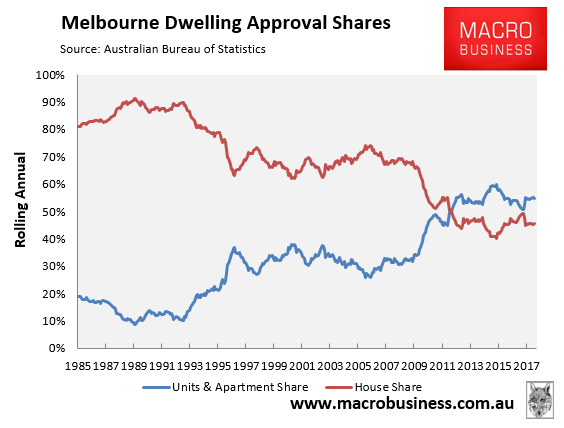
Melbourne will forever be playing catch-up on dwelling construction, and its residents will be forced to live in smaller and more expensive housing, and wasting more of their time stuck in traffic or crush-loaded onto a sardine packed train or tram.
Moreover, Melbourne’s tearaway population growth has led Victorians into the worst economic performance of any state. Once population growth is taken into account, Victoria’s real GSP grew by only 0.9% in the year to June 2017 (latest available data), albeit above the national average (0.4%):
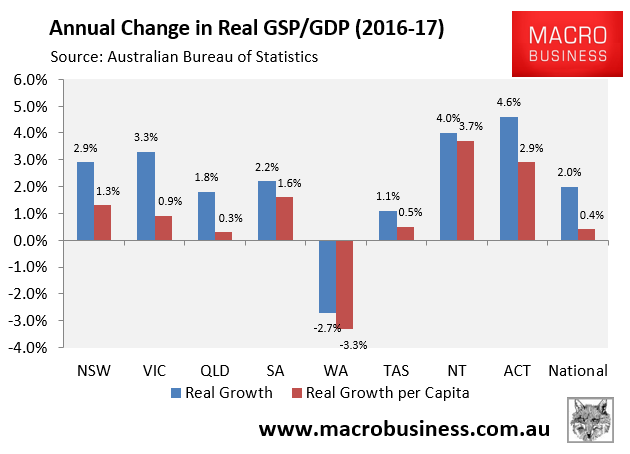
However, since the onset of the Global Financial Crisis (GFC) in 2008, per capita gross state product (GSP) in Victoria has barely risen at all:
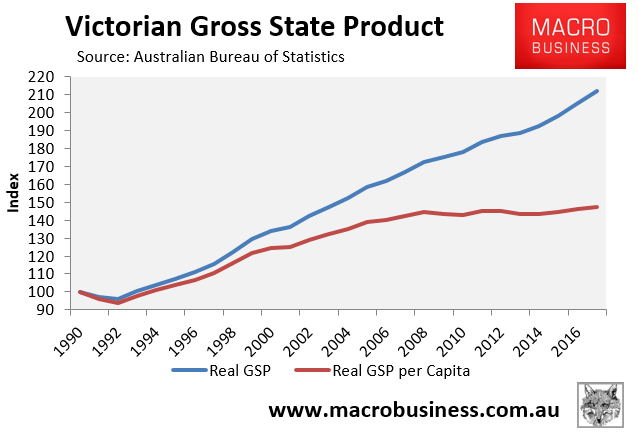
Worse, Victoria has experienced by far the lowest increase in per capita GSP in the nation since the GFC:
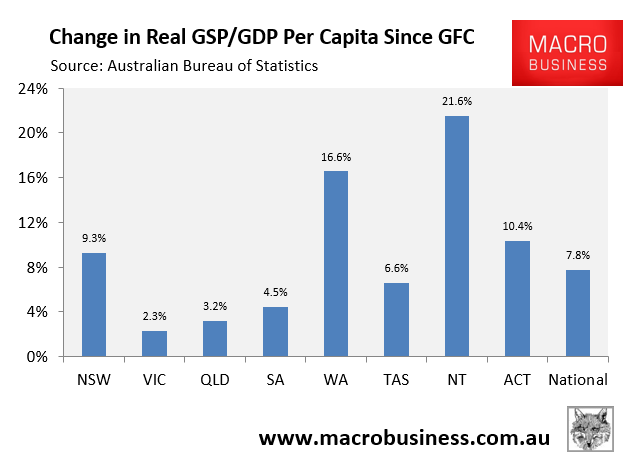
So what has been happening in Victoria is that the economic pie has grown due to population growth, but everyone’s slice of that pie has remained almost stagnant!
But wait, it gets even worse for Victorians. The growth in Real Gross State Income (GSI) per capita was the weakest in Victoria in 2016-17:
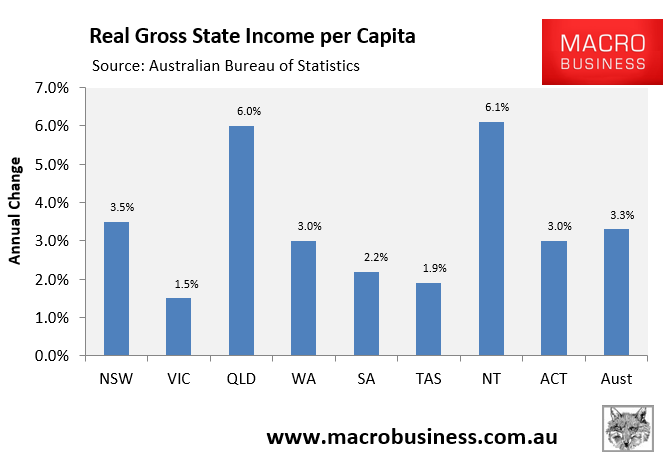
And also the weakest of all jurisdictions since the GFC:
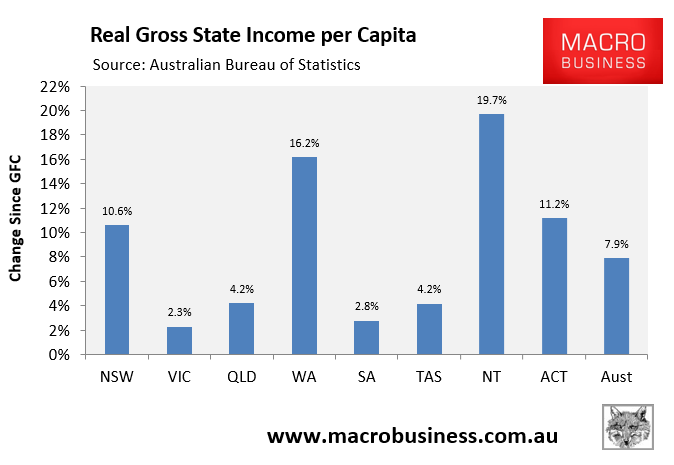
Moreover, because much of the income from production (GSP) goes to corporations or offshore, a far better measure of living standards is gross disposable household income per capita. Sadly for Victorians, they have the lowest per capita gross disposable income on the mainland, only beating out lowly Tasmania:
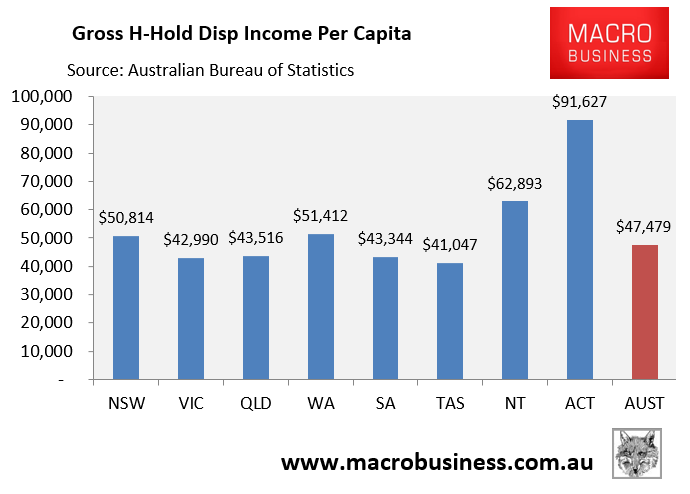
What should become abundantly clear is that Victoria is running a ponzi economy based on endless population growth (immigration), which in turn has juiced its services industries (think cafes, universities and financial services) and the housing construction industry (see next chart).
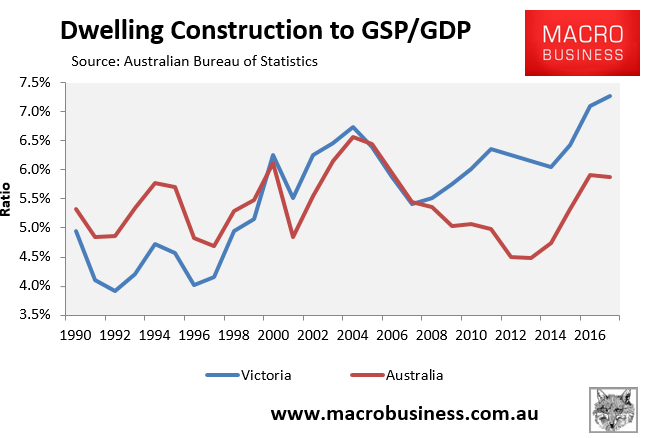
Meanwhile, Victorian business investment – the productive side of the economy – has flatlined in real terms since the GFC and fallen heavily as a share of the economy:
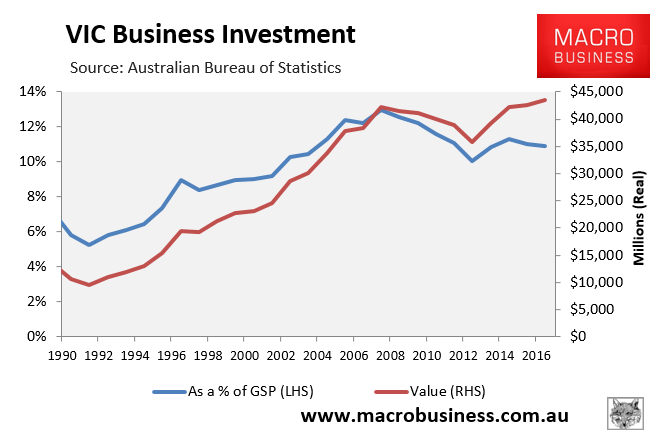
Victoria’s ponzi growth model is like a dog chasing its tail: as soon as the population growth stops, so does the growth in services/construction that it creates, raising a big question mark over the sustainability of the economy.
Further evidence of this false economy is found in Victoria’s trade performance. Exports have recorded slow growth over the past 15 years, whereas imports have more than doubled. Accordingly, the state’s trade deficit had blown out to a whopping $50.4 billion in the year to June 2017:
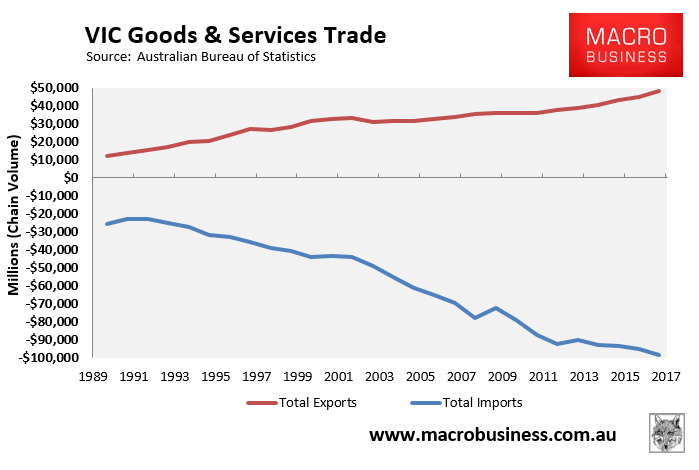
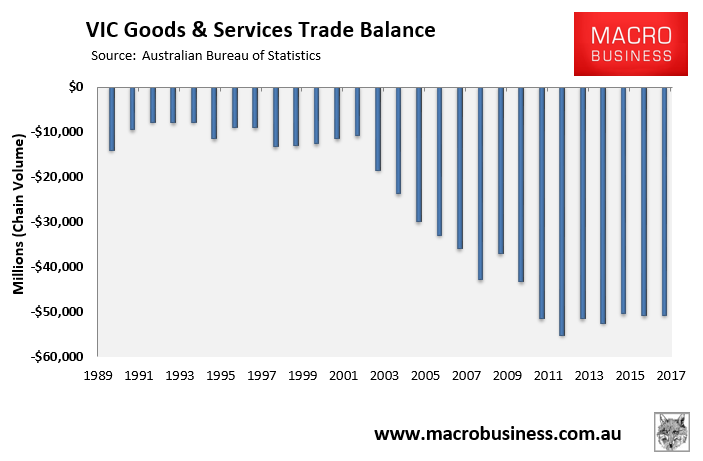
Out of control population growth is dragging Melbourne’s standard of living slowly but surely backwards towards Bogota, Pune and Nanyang. Why would any informed Melbournian choose that, Dr Terrill?

